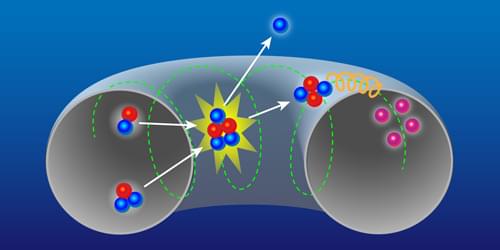The observation of self-heating in magnetically confined plasmas represents a milestone on the road to fusion reactors based on such plasmas.
A fusion reactor would generate electricity using the energy released by nuclear-fusion reactions occurring in a plasma. A key step in the race toward realizing the dream of such a reactor is the creation of a burning plasma—one in which the fusion reactions themselves supply most of the heating needed to keep the plasma at fusion-relevant temperatures. This step has recently been demonstrated for inertially confined plasmas [1, 2] (see Research News: Ignition First in a Fusion Reaction) but has so far remained elusive for magnetically confined ones. This goal could now be within reach thanks to direct evidence for fusion-induced heating of electrons in magnetically confined plasmas obtained by Vasily Kiptily and colleagues at the UK-based Joint European Torus (JET) facility [3].
The fusion of two heavy hydrogen isotopes—deuterium (D) and tritium (T)—presents the most promising path to a fusion reactor, both because of the relative ease in getting these isotopes to fuse and because of the large amount of energy released in each reaction. When D and T fuse, an alpha particle (a helium-4 nucleus) and a neutron are generated, carrying the released energy in the form of kinetic energy. The goal of achieving energy production from controlled fusion on Earth relies on the created alpha particles remaining in the plasma and heating the fusion fuel to keep the reactions going, while the kinetic energy of neutrons escaping the plasma is converted to electrical energy.
